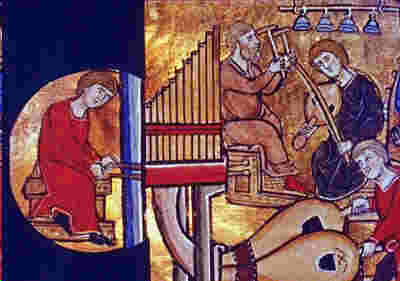

|
| |||||||||||||||||||||||||||||||||||||||||||||||||||||||
|
|||||||||||||||||||||||||||||||||||||||||||||||||||||||
|
| |||||||||||||||||||||||||||||||||||||||||||||||||||||||

Welcome to music of the first world war Era—Page 2Compare Lili MarleneContrast the mood and message of Over There with Lili Marlene. Hans Leip, a German soldier who'd been at the front, was inspired to write his war poem, Lili Marlene, in 1915, two years before Over There appeared. You wouldn't guess it was the same war.
About the warIt was the Great War, the War to End All Wars, the War to Make the World Safe for Democracy; it was the war that would be over "before you know it," "in a fortnight." (Aren't they all?) It was the Great War, the war that soon became the Great Slaughter.
It was a time of isolationism, complacency, immigration, manifest Destiny, social abuse, and capitalistic expansionism. It was a time of boundless optimism. It was also a time of protest. Many Americans turned their heads in denial while factions marched in the streets, both for an against the war. Sweet and sentimental was "in" in war songs, but so was outrage at the senseless waste of lives, at the bloody horror and mud of the trenches. Uncle Sam posters declaiming I Want You! popped up everywhere. Despite all opposition, conscription began. About I Want You!The world famous I Want You! poster was created in 1917 to encourage recruitment in the United States Army during World War I. It was drawn by James Montgomery Flagg, an American artist and illustrator. Flagg, who was born in 1877, died in 1960; he lived long enough to see his handiwork become famous around the world. After WWI, he was among the many Americans who studied fine art in Paris in the 20s.
Over 4 million copies of the poster were printed during World War I. It was so effective, it was revived for World War II. The original was copied over and over and appears in numerous different versions in both wars. The one you see here is the original. Flagg's poster was inspired by a British recruitment poster showing Lord Kitchener in a similar pose. Flagg's inspiration in turn has inspired untold numbers of civilians to "join up" in two world wars. Look closely at the face on the poster. Young Flagg used his own face for that of Uncle Sam, adding age and the white beard. Why? He said he used his own face simply to avoid the trouble of arranging for a model. Uncle Sam MobilizesDuring the mobilization period at the start of the war, most Americans were naive and uninformed about what was really going on "over there." It was only after U.S. troops took positions in the trenches that the truth began to emerge. Prior to the American entry into the war in 1917, both sides—the Allies and the Axis—knew better. They had been fighting since 1914. Long before the American Expeditionary Force landed on foreign soil they had been sickened and weakened by the misery and horrors of dysentery, shell shock, trench foot, trench mouth, lice, frostbite, influenza, gangrene, putrefaction, infected wounds, severed limbs, bayonets in the gut, firing squads, creeping bombardments, gas attacks, barbed wire, aerial strafing, and suicidal, fruitless charges against machinegun nests. Morale was destroyed on both sides. At sea, where freighters, tankers, and troop ships were all but defenseless, many lives were lost, victims of German U-boats. Many questioned the reasons for the war and its justice. Robbed of their manhood and material resources, enfeebled by hunger at home and at the front, both sides flirted with collapse but were too proud and stubborn to seek peace.
Informed by news reports from the front and letters from doughboys, it wasn't long before America woke up. Harry S. Truman, captain of artillery in WWI, later President of the United States in WWII, was one of those soon disillusioned by what he saw in France. Nevertheless, three American divisions distinguished themselves at Chateau-Thierry, Cantigny, and Belleau Wood. Their sacrifices and successes reinvigorated the veteran French and British troops and discouraged their German enemy, and the war came to a swift conclusion. In the short period of their participation, over 53,000 Americans were killed fighting. Illness and other causes brought the total number of American deaths to about 126,000, with 204,000 wounded. Most of those who did not die fighting in the trenches were victims of what came to be known as the Spanish Influenza, a strain related to one that had broken out in 1917 at Camp Funston and Fort Riley in Kansas, and perhaps at the small French provisioning town of Etaples in 1916. The outbreak among the U.S. soldiers early in 1917 had killed thousands, but the worse was yet to come. Once in Europe, so many American soldiers—an estimated 70,000—died miserably of the flu or were sidelined, that a desperate General Pershing plead with President Wilson for reinforcements. Wilson agonized; he knew that sending the requested troops meant a virtual death sentence for many because inevitably they would contract the disease on crowded troop ships, but what else could he do? ETAF Recommends...Coming.
Search this web site with Electricka's Search Tool:
tap or click here
Electricka's Theme Products
Shop At Cafe Press
This web site and
its contents are copyrighted by
Decision Consulting Incorporated (DCI).
All rights reserved. |
| ||||||||||||||||||||||||||||||||||||||||||||||||||||||